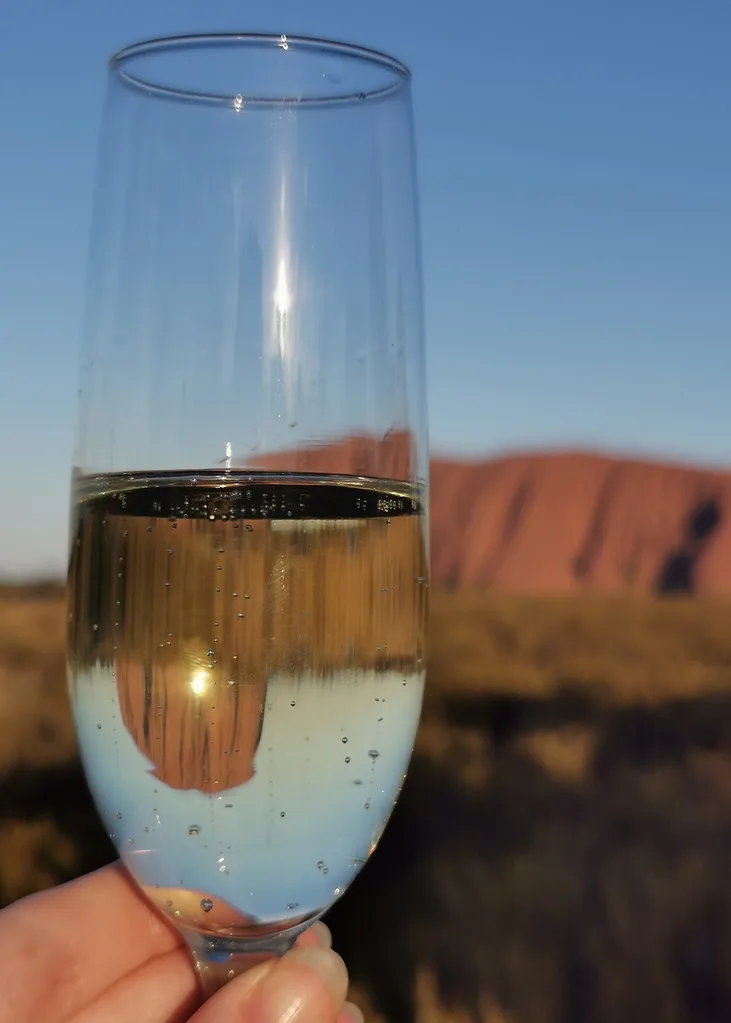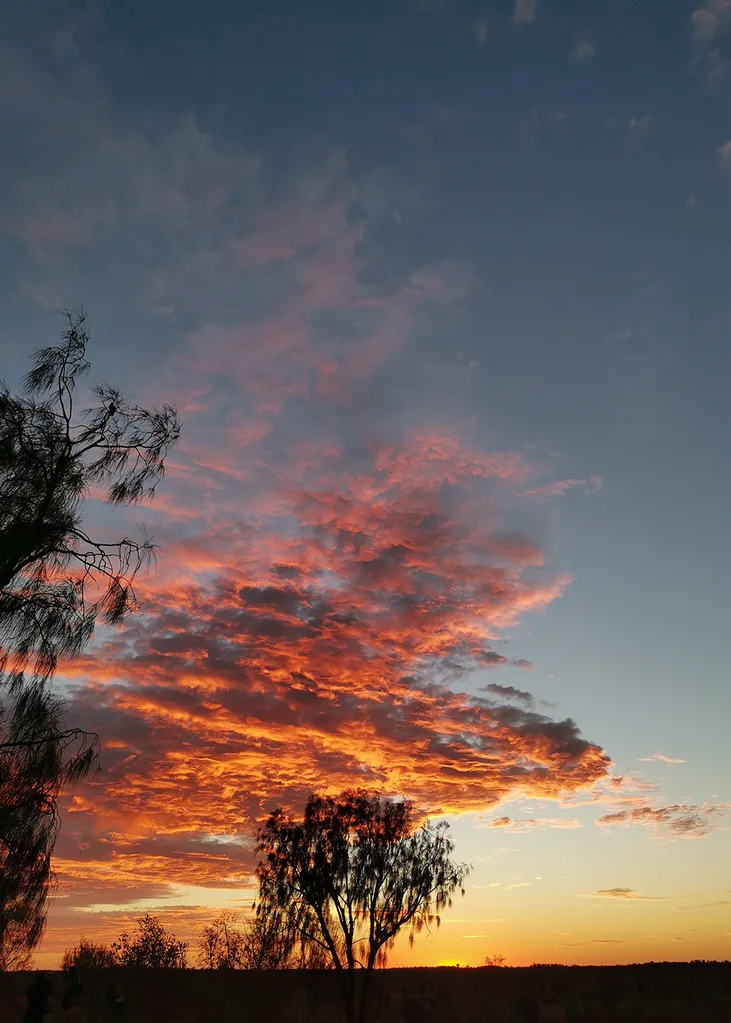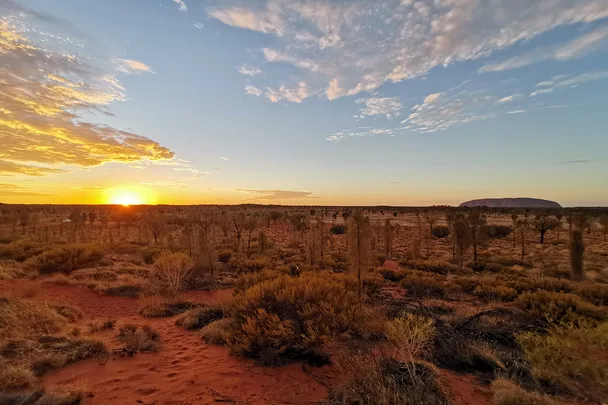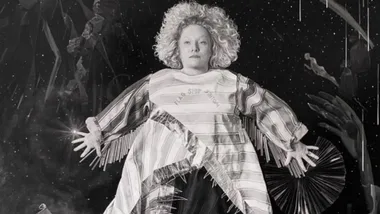I was 10 when I first went to Uluru – and it is still the most spiritual experience I’ve had in my entire life (even more so than the time I saw Kasey Chambers in the bathroom at Opera Bar).
Sixteen years later and I still remember being blown away by the sheer size of The Rock and the Indigenous stories of the sacred site. Doing the four-hour trek around the base as a kid, I was captivated by the untouched caves and crevices, hallowed watering holes and rock art.
Created 500 million years ago, the Indigenous community regards Uluru as a living form and a dwelling for past spirits to live in. You can feel that energy when you’re there.
Anyone who’s been to Uluru will tell you it’s a magical and truly special experience.
Since my first visit, I’ve longed to go back to Uluru as an adult – and when I did just that last week, it did not disappoint. Can confirm: it’s still bloody big.
Unlike last time (when film cameras were still a thing), I was able to capture my experiences on the new Huawei P30 Pro phone and immortalise the memories on my Instagram account. You’re welcome, followers.
Here’s how to spend 24 hours at Uluru – in marie claire style…

WAKE UP
In 2016, international artist Bruce Munro launched the incredible Field of Light installation in the desert, comprising of 50,000 solar-powered stems crowned with light-changing bulbs. Uluru is magical on it’s own, even more so with a glittering field of colour in front of it. The exhibition has been extended to December 2020 and is a must-see for all visitors. Arriving in the morning dark, you can explore the field on foot, before watching the sunrise over Uluru from the sand dune look out. Use the handy Nightmode on the Huawei P30 series to photograph the installation in all its glory. The low-light function brings light and colour into the darkness – perfectly capturing the iconic scene. See below…

TOAST
The best part of going to Uluru as an adult is being able to watch the sun set over The Rock with a glass of champagne in hand. From the look out spot, visitors can watch as Uluru changes colour as the sun slips below the horizon. There is a special ten-minute period where it turns a bright red before mellowing to a dark purple. It’s like watching a real-life painting develop.

DINE
If you’re planning at trip to Uluru, the Sounds of Silence dinner should be at the top of your to-do list. After the sun goes down, you head to a secret spot in the middle of the desert under the stars. The best part of the night isn’t the buffet feast (which includes kangaroo and crocodile dishes) or the perfectly paired wines (the Pinot Gris is delightful), but the star talk after the main course where a local star-gazer explains the constellations. Make sure you take the opportunity to look at the moon through the telescope, for some reason the stars shine brighter in the desert. It’s, like, a scientific fact.

PACK
Of course you need to bring sunscreen, a fly net and light linen clothes for the daytime, plus a floaty dress for the Sounds of Silence dinner (a la my We Are Kindred number below); but the most important thing to bring to Uluru is a good camera. I took the new Huawei P30 Pro and now I’m a professional photographer. As well as the aforementioned Nightmode, which is perfect for capturing images at sunrise and sunset, the P30 Pro has an ultra wide angle lens function, which means you can fit Uluru in one frame (and take impressive selfies). The colours of Uluru are spectacular and you need a high-quality, 40 Megapixel camera to do them justice. Trust me, you’ll want to cherish your Uluru memories forever (and plaster them all over Instagram).

The Huawei P30 Pro (RRP $1599) is available in Australia from April 16.

 James D. Morgan
James D. Morgan









